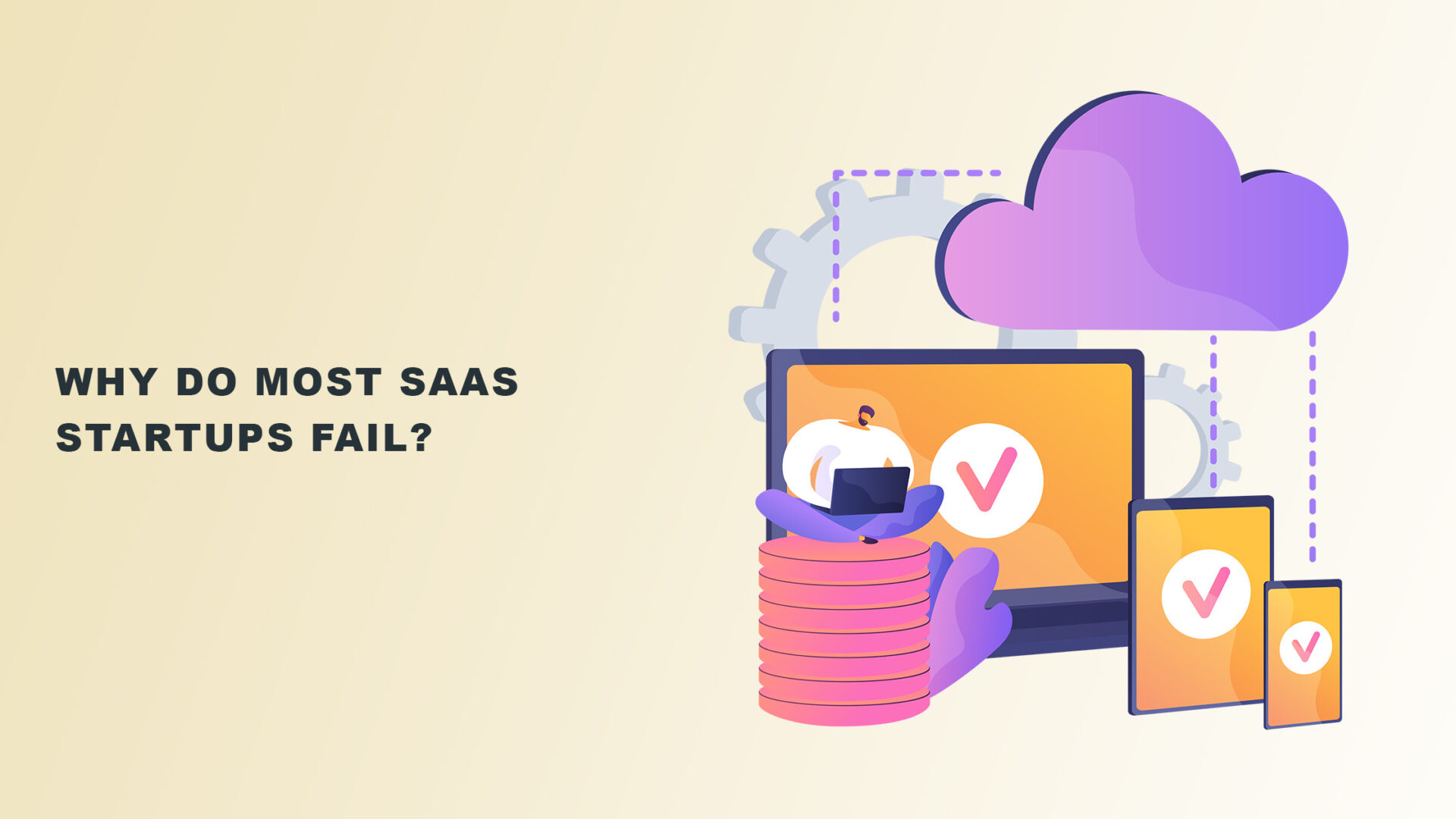Find out the answer to “Why do most SaaS startups fail?”.
Understand what you can do to prevent it so you can groom your startup for success.
Software as a Service (SaaS) is a business model where a customer uses an application or program using the internet and a web browser.
Because everything is in the cloud, people can use the software anywhere.
While SaaS represents innovation, most startups must be up to the challenge.
They fail somewhere along the road.
Let’s look at why this is and what you can do to avoid the same fate.
Lack of Product Demand
One of the reasons why most SaaS startup fails is because they fail to reach Product-Market-Fit.
Product-Market Fit (PMF) is about building a product or service for a demographic.
Here are the steps you can take to achieve an effective product-market fit:
1. Start with a Business Model Canvas
It looks at the fundamental aspects of a SaaS business model.
At this initial step, the focus is on the following areas:
- Target market
- Sustainability assessment
- Software demand
- Intensity of demand
- Development solutions
- Features of competition
2. Perform Market Fit Validation
Find out if your SaaS startup’s target market shows interest in its product.
Your target audience should express a need for their product.
To do that, you can conduct beta tests or fake door testing — like what Twitter did.
3. Collect Customer Feedback

SaaS companies fail because they don’t conduct surveys — one that would determine what the target audience thinks of their SaaS product.
In this case, you must let customers tell you about their reactions (or responses) to their product.
You can also interview customers and let these people share their thoughts.
Then, use the survey answers to improve their SaaS model to meet the demands and needs of their target audience.
4. Do a Minimum Viable Product (MVP) Development
An MVP is the first chance to make an impression and stand out.
You should create an MVP that gives potential customers a reason to avail of their product.
A well-developed MVP can lessen production time and costs.
And it does so while speeding up the date of product release.
5. Advertise
Your SaaS startup must market the product to a target audience.
You can use a Bullseye Framework.
It can let you know what specific marketing strategy is ideal.
You can also run the following:
- Social network ads
- Paid advertising campaigns
- Search Engine Optimization (SEO) campaigns
6. Analyze Product Performance
- You must know their retention, user engagement, and growth rates.
- This enables you to have a solid understanding of their performance.
- From the analyzed data, you should be able to tell whether to continue with your path or pivot.
Insufficient Product Launch

Your startup needs a good launching strategy to be able to succeed.
It will result in a product that won’t reach potential customers — losing sales.
For a product launch to be effective, a SaaS startup needs to understand its three phases.
Phase One: Pre-Launch
To avoid SaaS startup failure, you must flesh out the unique selling point of its SaaS product.
At the pre-launch stage, it needs to build confidence in its abilities and in what it can offer.
You need to focus on these:
- Product features.
- Business model features
- Understanding buyer profiles
- Competitors
Phase Two: Launch
This phase has to do with turning people into potential customers.
Then, the idea is to convince these potential customers to engage in a product or service.
A SaaS startup needs to create and use a go-to-market (GTM) strategy for this to happen.
You can deploy digital marketing strategies:
- SEO content marketing strategy (for avid readers)
- Paid online advertising (for the curious clickers)
- Product demos (for people who want to have first dibs on things)
Phase Three: Post-Launch
In the last phase, the goal is to make adopters feel accommodated.
This way, you have a reason to continue using a product.
To fare in this phase, the focus of SaaS startups should be:
- The user-friendliness of their product
- A personalized user experience
- User opinion considerations
- Great customer support
- Sufficient resources and a reliable knowledge base
High Churn Rate
The churn rate refers to the number of customers that exit a program in a given time.
Given that user retention is one of the top reasons for the profitability of a SaaS startup, you must do something about the churn rate.
First, determine your churn rate.
You’re all set if it’s low as long as you maintain the number.
If it’s high, find ways to reduce it.
Here’s how to solve problems regarding your SaaS startups’ churn
Make Instructables
Guide customers on how to properly utilize a SaaS product.
If you can’t figure out how to use a product, they’ll turn to other sources — competitors.
Here are things you can create:
- How-to (or step-by-step) articles
- Infographics
- Infomercials
- Instruction booklets
Listen to Customers
Keep in mind that customers are vital to a startup.
Without customers, there is no business.
And without a business model, there is hardly a point in a startup.
So, accommodate your customers by asking these questions:
- “What do you like and dislike about the product?”
- “How can we make the product better for you?”
- “Would you recommend the product to your family and friends?”
Incorporate Live Customer Support

If your customer support is problematic, customers can get dissatisfied.
There will be instances when customers have concerns.
And if no system can help them address their concerns, they will find another SaaS business.
To prevent this, you need to employ a dedicated live support team.
Here are tips on how to provide live customer service:
- Answer questions and eliminate doubt
- Integrate chat with a Customer Relationship Management program to personalize conversations
- Install a chatbot to deliver faster customer support and answer common questions
Poor Budgeting

It doesn’t matter if there is steady cash flow and financial growth.
With proper budget allocation and management, your startup may have enough financial support for more essential operations.
Without one, it will fail in the long run.
Here are things to consider to resolve budgeting concerns:
Be Strategic about Equity
Avoid giving away equity too early in the development stages.
You may assume that your SaaS startup may be worth little at first.
But, if you give it time, it can be highly valuable.
One of the most practical ways of approaching this is to understand how much equity you should give to founders and other members beforehand.
Then, be fair about it.
For example, you may distribute equity to the founders and essential employees only.
Keep Track of Expenses
Monitor the cash flow and cut off excessive and non-essential expenses.
Better yet, review startup operations and streamline them.
Be smart with your financial operations and eliminate anything that doesn’t bring value — only additional costs.
Have a Flexible Plan
Sometimes, there will be unexpected expenses.
And there are some expenses your startup needs to handle before everything else.
For example, you must prioritize product development over marketing.
Unexpected expenses have a way of knocking down startups.
They can make a startup feel discouraged.
While they’re unavoidable, a startup and its team can adjust things to make room for them.
Poor Management

The backbone of a startup?
These are the people who keep up with its operations.
Here are tips on how to avoid poor management:
Hire Competent People
Hiring the wrong people, not having a rigid talent acquisition and selection strategy, and more is detrimental to a startup.
As an owner, it’s up to you to enlighten your HR about this.
Point them in the right direction.
Help them understand that they should vet the people they invite to their operations.
Advise them that from now on, they should be mindful of who they add to the team.
Remind them that everyone on the team should have a vital role.
If there are people who don’t put in the work, they shouldn’t think twice about letting these people go.
Resolve Conflicts
Are teams and co-owners on different pages?
Then, it’s what a recipe for disaster looks like!
If there are misunderstandings, train the startup to eliminate them.
They can use conflict resolution strategies like:
- Always clarifying issues
- Not ignoring problems (so they won’t snowball)
- Encouraging involved parties to talk
Prioritize Activities
You should also consider the activities your startup needs to invest in.
Here is a list of some things you should focus on:
- Customer acquisition strategies
- Market research
- Growth techniques
- Definite ways to improve operations
Conclusion
Most SaaS startups fail because of the reasons mentioned above.
Other startups fail because they don’t have advisors and mentors.
While they know precisely where they want to go, no one is there to coach them.
As a result, they may have a challenging time getting to their destination.
However, reading this post enables you to address these concerns and help your SaaS startup succeed.
Looking for additional help?
Approach a startup model, which you can learn more about here. Then, they’ll take it from there.

